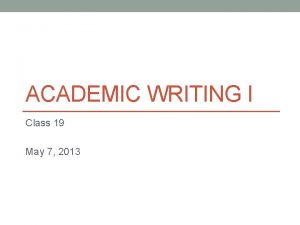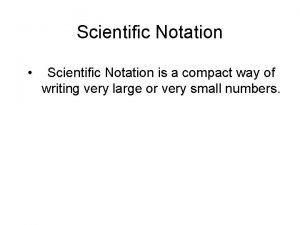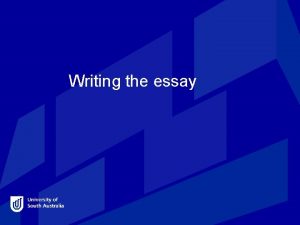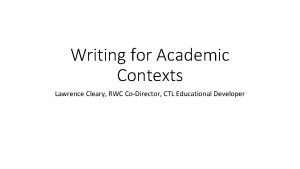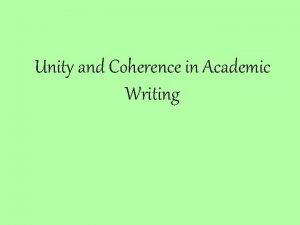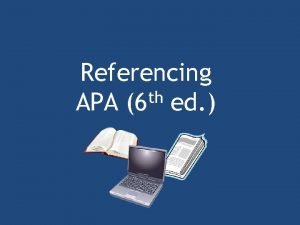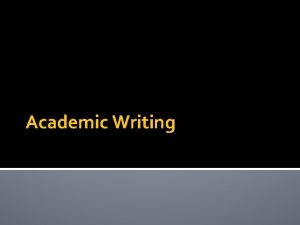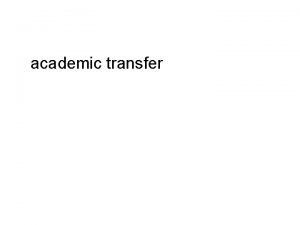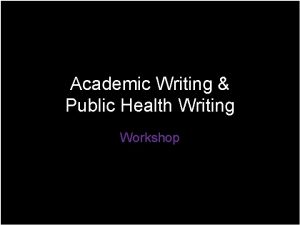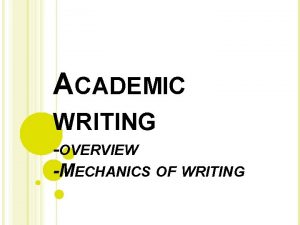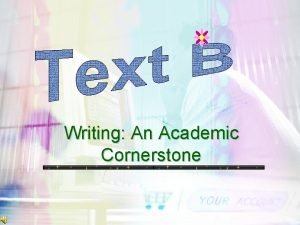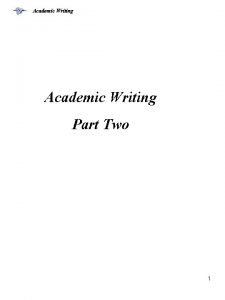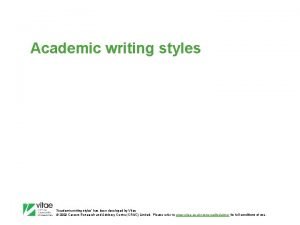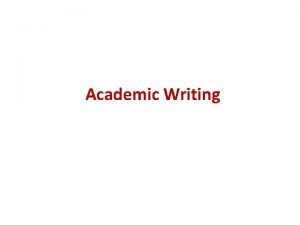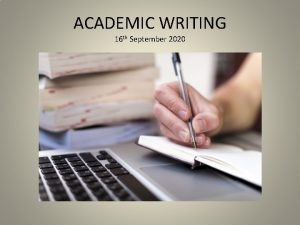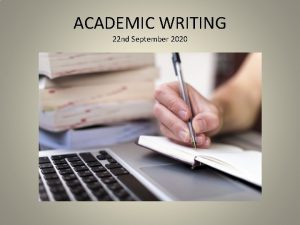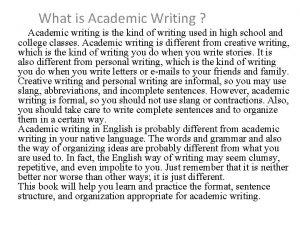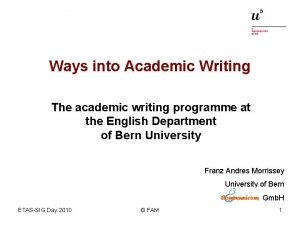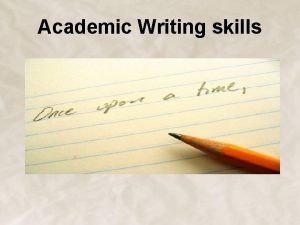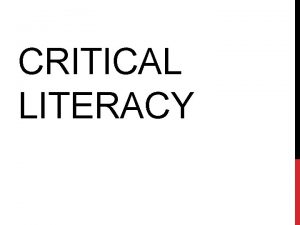Academic Writing Writing in a critical way Dr




















- Slides: 20

Academic Writing: Writing in a critical way Dr. Tamara O’Connor Student Learning Development Student Counselling Service student. learning@tcd. ie 896 -1407 http: //student-learning. tcd. ie

Learning Objectives 4 Understand what is meant by academic writing 4 Awareness of academic conventions and practices 4 Learn how to develop argument in your writing 4 Awareness of plagiarism and use appropriate use of references/citations

Writing in an academic way 4 Being critical and analytical 4 Using language in a precise & subject- specific way 4 Adopting a position - thesis 4 Drawing on and citing a range of authors & arguments 4 Remaining objective

Writing Process 4 Planning 4 Thinking 4 Researching Plan Think 4 Writing 4 Editing Write

Planning the assignment 4 Understand the question – Breakdown – Verbs 4 Requirements – Length, Wording – Referencing 4 Establish Time Frame

Thinking 4 Brainstorm – Ideas – What know – Try mindmapping 4 Preliminary reading 4 Refine topic 4 Continues throughout process

Organizing your argument 4 Title 4 Introduction – Thesis statement 4 Body Paragraphs – Constructing Topic Sentences – Building Main Points – Countering the Opposition 4 Conclusion From Purdue University Writing Lab http: //owl. english. purdue. edu/

Structure 4 Introduction – outline of essay 4 Main section – Main point A • details, evidence – Main point B 4 Conclusion – summary of main points – personal conclusions

Researching 4 Rough outline 4 Gather information relevant to topic 4 Keep good notes – organise content according to outline – choose what to include 4 Keep references 4 Digest and reflect on information

Writing 4 Start writing early – extend outline – one idea or section at a time – get something down! 4 Write first, rough draft 4 Revise & improve draft 4 How many drafts?

What is critical writing? 4 Argument – Evaluate & weigh up – – ideas State point of view Consider available evidence Possible counter arguments Claim that is proven throughout the paper 4 Opinion – Point of view – Lack of supporting evidence – Personal feelings and views

Steps in constructing thesis 4 Analyse topic 4 Write down your working thesis – Your point of view in relation to topic – Keep thesis prominent 4 Organise your argument 4 Develop argument 4 Document points and claims 4 Reference or bibliography

Develop your argument 4 Use source material – reliable evidence 4 Show line of reasoning – link points – central guiding line 4 Show awareness of complexities – Counter arguments, relativism 4 Your conclusions - based on evidence

Signposting your line of reasoning 4 Indicator words for claims – Therefore, thus, hence, so, as a result 4 Indicator words for reasons – Because, since, on account of, for, in view of, for the reason that 4 Tentative or ‘hedging’

References Why? 4 Credit sources of information & ideas 4 Reader can locate for further information if required 4 Validate arguments 4 Increase and spread knowledge 4 Show depth, breadth & quality of your reading!

References When? u Direct quotes u Paraphrases u Statistics/Studies u Theories u Interpretations u Facts

Plagiarism 4 Using someone’s words or ideas and presenting them as your own (Marshall & Rowland, 1998) 4 Inappropriate use of ideas from books, articles, internet, or other students’ work ? ? ?

References 4 How? – Reference system e. g. Harvard, Footnote – Record sources – Take careful notes – Reference list – In-text citing or referencing


Further information 4 http: //student-learning. tcd. ie 4 http: //owl. english. purdue. edu 4 http: //www. learnhigher. ac. uk 4 http: //writing. umn. edu 4 Linking words: http: //www. unisanet. unisa. edu. au/Resources/la/Qu ick. Clicks%20 Repository/LC_worksheet_linking% 20 words. pdf 4 Crème & Lea (1997). Writing at university.
 Critical semi critical and non critical instruments
Critical semi critical and non critical instruments Semi-critical
Semi-critical Academic writing technical
Academic writing technical Business writing vs academic writing
Business writing vs academic writing Slidetodoc.com
Slidetodoc.com How to solve a scientific notation
How to solve a scientific notation In a critical way
In a critical way Marginal frequency
Marginal frequency Two way anova
Two way anova Threaded binary tree advantages and disadvantages
Threaded binary tree advantages and disadvantages Perbedaan anova one way dan two way
Perbedaan anova one way dan two way One way anova null hypothesis
One way anova null hypothesis One way anova vs two way anova
One way anova vs two way anova Pengertian two way anova
Pengertian two way anova Conventional software engineering
Conventional software engineering This way that way over the irish sea
This way that way over the irish sea Walk this way talk this way
Walk this way talk this way Example of academic writing
Example of academic writing Uefap
Uefap Unity coherence
Unity coherence Quote about academic writing
Quote about academic writing



